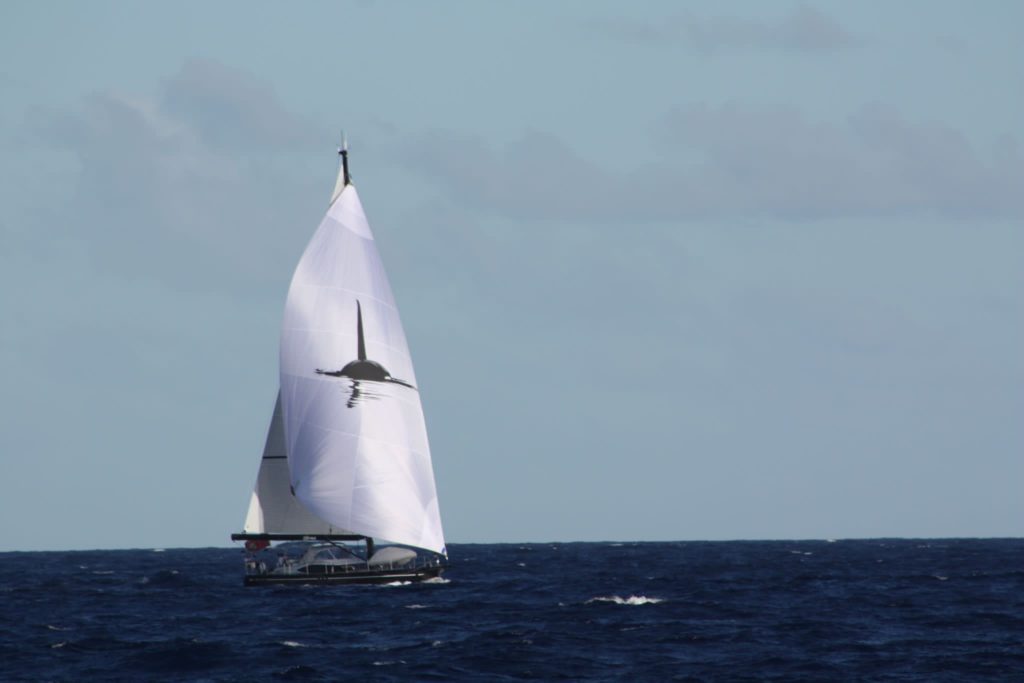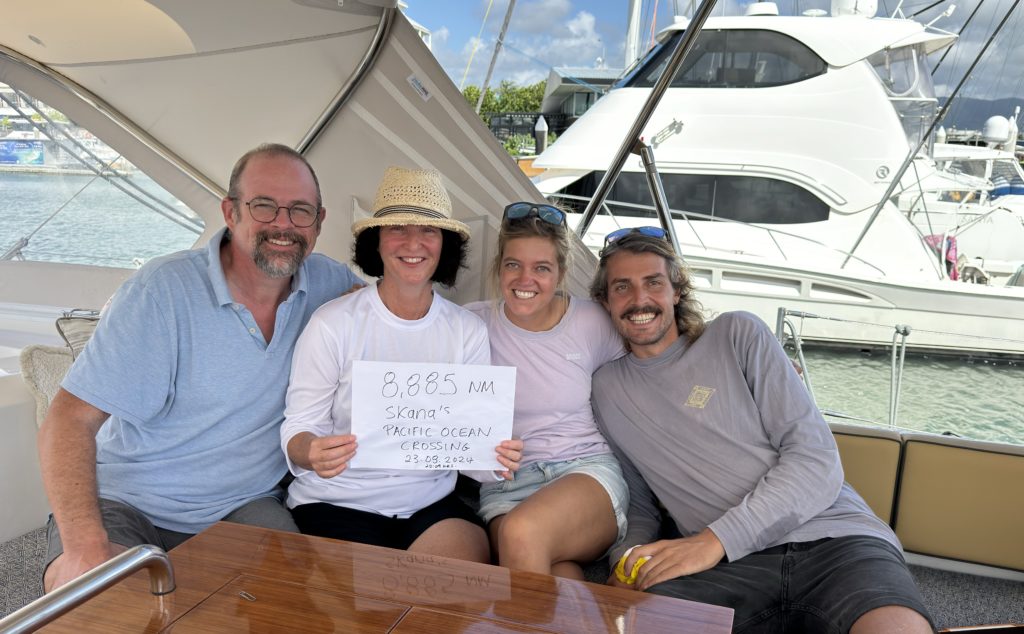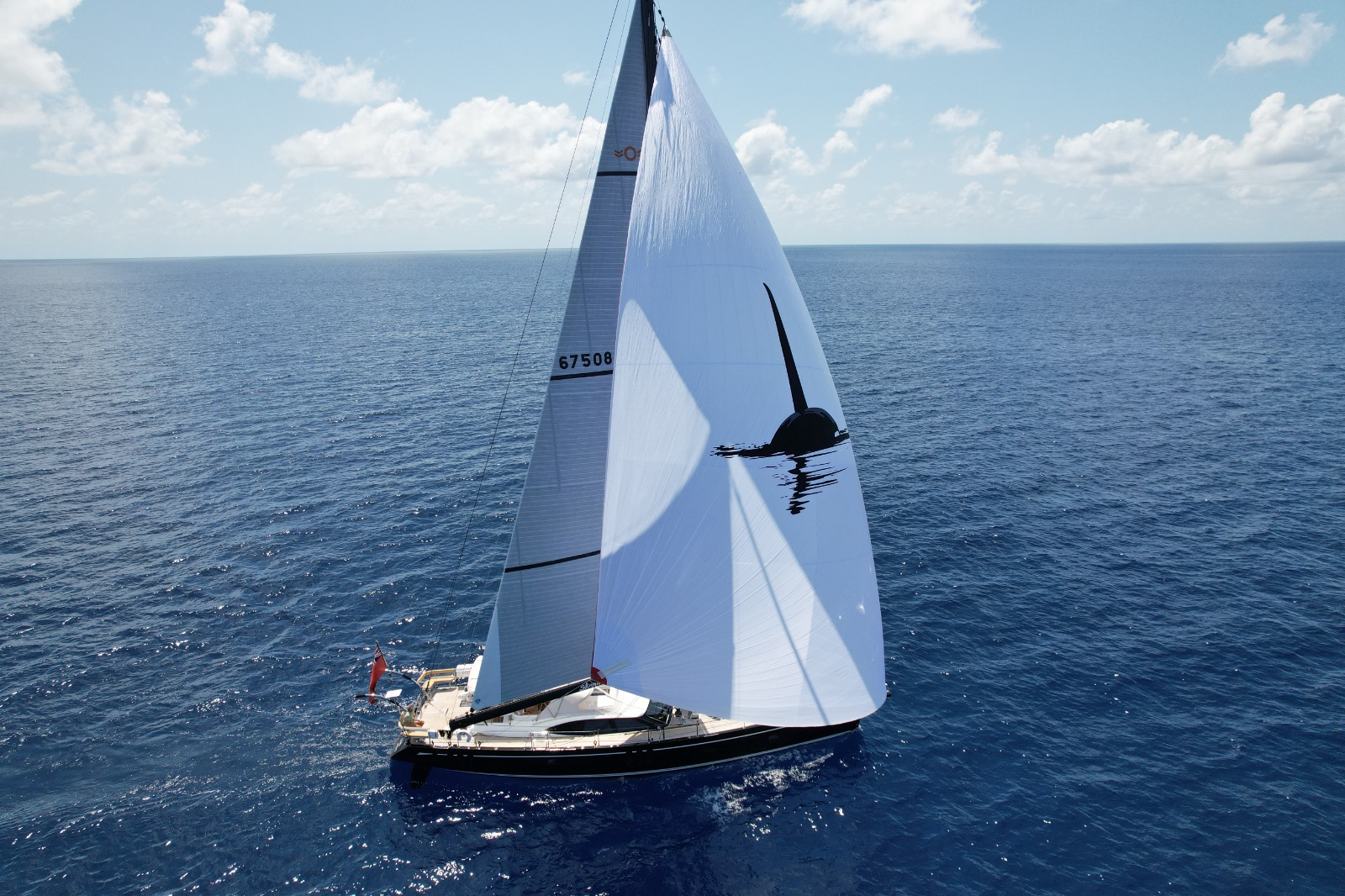Following my A,B,C,D,E framework for wonderment, this theme can go in many directions. However to kick this first one off, allow me the indulgence to talk about our beautiful boat. For all the ups and downs we have had in our new build, it is unquestionably a beautiful design and sails so so beautifully.
Gennacker Flying en route to the Galapagos
This footage was the first drone shots taken by our crew Joren and Lotte. We were en route to the Galapagos Islands. It was a couple days into our passage. We had just left the island of Coiba off the coast of Panama, a national marine reserve teeming with biodiversity and gloriously untouched by humans, in part, because it was a notorious penal colony a long time ago. It also expensive to get cruising permits.
I think this imagery captures our boat well. Like her orca name-sake, effortlessly gliding through the warm waters, she’s both elegant and powerful. Showcasing our yacht’s logo, a front view of an orca’s fin, we have our North Sails gennacker flying, a combination between a genoa and spinnaker, and the fastest in our sail plan. Even with just 10 knots of wind we can do close that over the water.
Video: Skana, en route to the Galapagos, March 5, 2024
The serenity of this moment marked a subtle transition as well. Though a day away from crossing the equator (stay tuned for a “C” for Crazy story), it was finally dawning on us: we were leaving continental waters on a one-way trip west. Our charts were suddenly empty of that familiar long, longitudinal land mass of North America. There was nothing but wide expanses of blue waters ahead in almost every direction. A big wow. A big gulp. There was no turning back.
In essence, this was less about where we were on the map and more about what was happening to our minds and bodies. In the foreground of our thinking, we were still mentally catching up, wide-eyed and somewhat amazed that we had got this far in our mad adventure.
We were also nervously excited both about what we’d encounter on the water, from big supertankers to marine life, and how we’d perform on this longest-to-date passage. Scopolamine patches on, sea-legs unmastered, meals and watch routines still disorientating, it was clear our training wheels were not coming off anytime soon.

Underneath this all, however, the ocean was doing her deeper work. Even though we hardly knew it at the time, a slow process of surrender was happening—a process of letting go of any illusion of complete control and any sense of self-importance, the tiny spec that we were on this giant ocean.

With humility being the first lesson of the sea, our bodies were getting into compliance too. Engulfed by the humid salty air and long swells, a fuzzy state of consciousness was forming, the boundaries between our skin and the external world feeling more permeable and no longer as fixed, the hissing rhythms of surf entering our dream-states and our awake-states becoming more dream-like in turn.
At last I was getting a deeper inkling about that blue ocean bug sailors have tried to describe for centuries, mystically and wistfully, in poetry and prose— a water-bound altered state that never leaves the bloodstream once you let it in.

Five and half months later, on August 16th in Cairns Australia, we finished the Pacific crossing. Clocking at just under 9,000 nautical miles, I can tell you, it is every bit as massive and mighty as foretold. Leaving from Panama City, we went to the Galapagos, then the long crossing to the Marquesas, the Tuomotus, and completing French Polynesia, the Society Islands. After that it was Tonga, Fiji, Vanuatu, and lastly Australia. It feels timely to recall our earlier selves, to notice how far we have come mentally and emotionally, and take some pride in what we have accomplished.
What do we know now that we didn’t know then on March 5th? A good question I’d like to ask the OWR fleet as well. I will save those thoughts for another time.


